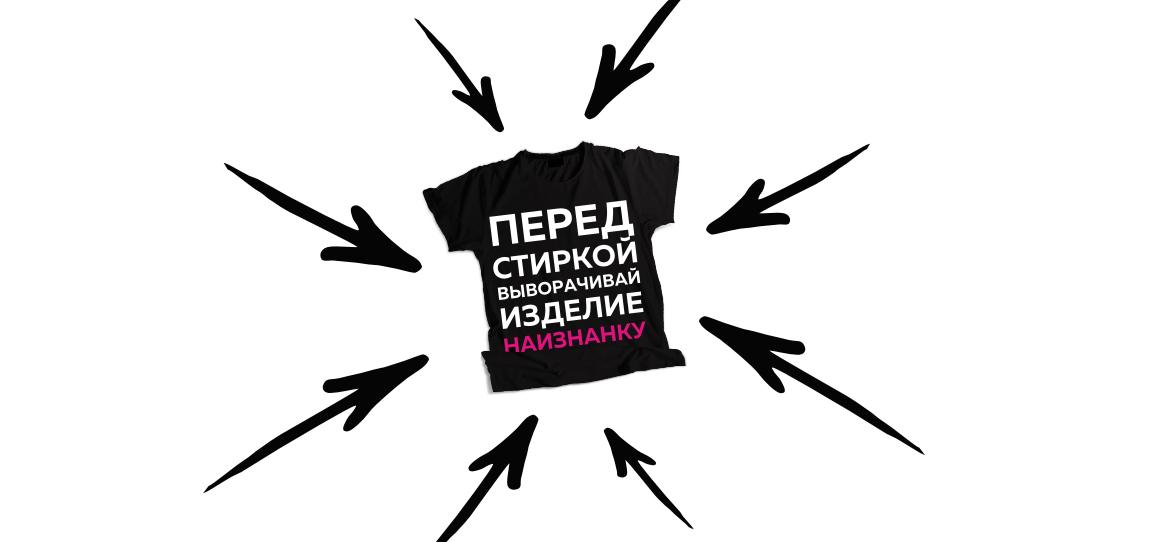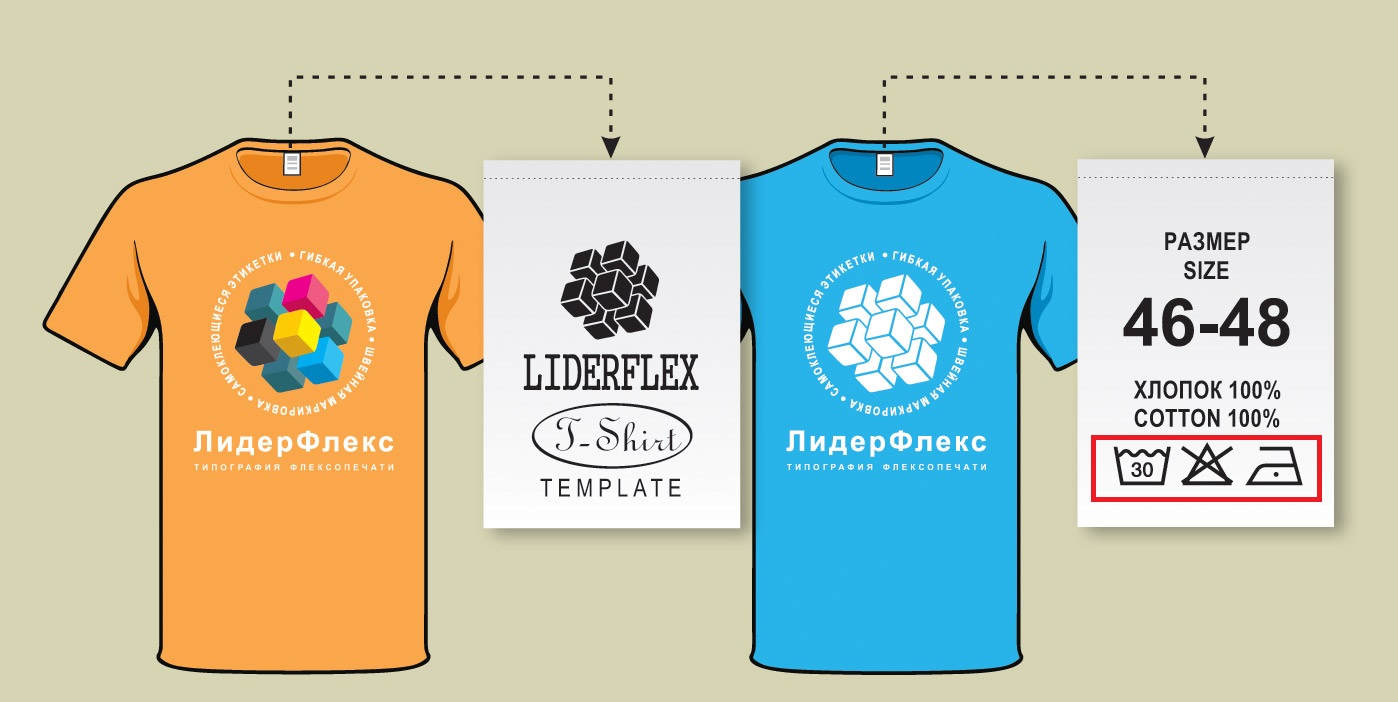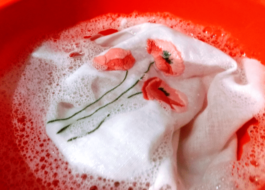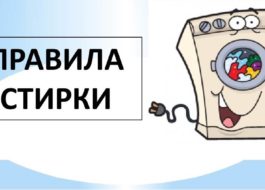Washing a printed T-shirt
 The lifespan of any item largely depends on its care, and T-shirts are no exception to the rule. To prevent the product from fading and stretching, and the design on it from slipping, it is necessary to wash and dry it correctly. Especially if there is a print or inscription on the polo. Manufacturers recommend washing a printed T-shirt differently than regular cotton items. All that remains is to learn the basic rules and nuances of caring for “painted” clothes.
The lifespan of any item largely depends on its care, and T-shirts are no exception to the rule. To prevent the product from fading and stretching, and the design on it from slipping, it is necessary to wash and dry it correctly. Especially if there is a print or inscription on the polo. Manufacturers recommend washing a printed T-shirt differently than regular cotton items. All that remains is to learn the basic rules and nuances of caring for “painted” clothes.
General recommendations
The print is applied to a T-shirt in different ways - and the care of the design depends on the type of printing. Some paints can withstand any load and temperature, others crack when wrung out and overheated. To ensure that the item does not stretch or fade when washing, and the picture remains bright and intact, it is recommended to follow the general rules:
- Handwash only;
- sort laundry before loading it into the drum (colored separately from white and dark);
- turn clothes inside out;
- use universal detergents (without bleaching components);
- remove stains with gentle cleaners (oxygen bleaches).

Particular attention must be paid to temperature. A range of 30-40 degrees is considered optimal; cold water is also allowed. Heating to 60-90 is rarely allowed and only for cotton and chintz T-shirts with a durable print.
It is recommended to wash T-shirts with prints by hand to avoid shrinkage and discoloration of the material!
For heavy stains, you can wash the printed T-shirt in the washing machine. The main thing is to adhere to certain rules:
- turn on delicate mode or hand wash;
- set spin to minimum;
- set the maximum temperature to 30-40 degrees.
Much depends on the fabric from which the T-shirt is made. If wool fibers are present, it is necessary to choose special detergents and cold water. If you are washing cotton clothes, it is recommended to increase the temperature to 40 degrees and add salt or softener to the washing machine. It is forbidden to wring out things with lycra at all - only completely natural drying.
A printed T-shirt must be dried in a special way. Firstly, any artificial drying is prohibited, both in a washing machine and with a hair dryer or battery. Secondly, things are hung wet so that water can drain freely. Thirdly, the fabric does not stretch - to protect the pattern from deformation.
Be sure to read the information from the manufacturer
Before washing any printed T-shirt, you must study the information on the label, which is sewn from the wrong side to the neck or side seam. On the tag, the manufacturer must indicate the composition and care instructions for the item.. The latter are often “encrypted” with special icons.
- Crossed out basin. Cannot be washed either manually or in a machine.
- A basin with a hand lowered into the water. Indicates the need for delicate care - hand washing.
- Bowl with water and mark “30”. The manufacturer allows you to use the washing machine, but only on a delicate program. Maximum water heating is 30 degrees. Intensive spinning is prohibited.

- Numbers "30" or "40". Indicate the maximum degree of water heating.
- Circle crossed out with a cross. Indicates that the T-shirt cannot be dry cleaned or bleached. The use of any bleaching agents is prohibited.
Before washing, you need to study the information on the label - there the manufacturer indicates the optimal conditions for cleaning the product!
- A triangle crossed out with a cross. Prohibition on spinning faster than 400 rpm.
- Iron with “steam” crossed out. Translated as “do not steam.”
- Crossed out iron. Ironing of items and prints is prohibited.
- Single point iron. Ironing is allowed at a temperature not exceeding 100 degrees and only from the wrong side.
- Iron with two points. Ironing at 100-150 degrees.
- A square with lines in the center. Drying on a horizontal surface is recommended.
- Square with three lines. The T-shirt should be hung to dry.
- "Empty" circle. Indicates the need for dry cleaning.
To prevent the product from shrinking and the design from deteriorating, you must strictly follow the manufacturer’s recommendations. If the T-shirt is discolored or stretched, it means the water was too hot and the spin cycle was too intense.
Print making technique is important
To prevent the print on a T-shirt from turning into a solid and shapeless stain, you need to pay attention to the paint application technology before washing. The method of image transfer determines the resistance of the pigment to cleaning and degrees. In this case, the type of base fabric does not matter - the design sticks equally on both a white and a black T-shirt.
Several options are possible:
- sublimation (in this case, the paint is deeply “imprinted” into the structure of the fabric, making the design maximally resistant to washing in a washing machine at any speed and degrees);

- silk-screen printing (the strength of the paint directly depends on the type of pigment and base fabric);
- silk transfer (such a sticker is not attached reliably, with frequent washing and intense friction it cracks and peels off, so manual cleaning is recommended);
- direct digital printing (can be loaded into the washing machine, but only on a delicate program).
T-shirts with sublimation and direct digital printing are machine washable!
Be sure to look at the type of fabric. Blended materials have been proven to hold paint better than natural cotton materials. Therefore, synthetic T-shirts can be loaded into a washing machine and spun at minimum speed, but cotton T-shirts cannot.
Interesting:
Reader comments
- Share your opinion - leave a comment
Categories
Washing machine repair


For buyers

For users

Dishwasher

















Add a comment